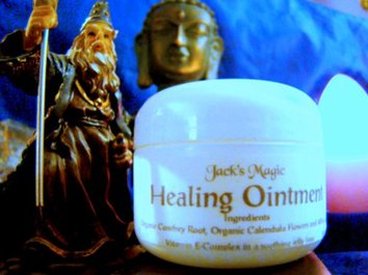Priest as Cunning Man December 15, 2016
Author: Beach Combing | in : Modern , trackback
This is an interesting case from 1867 recorded in a local newspaper. Readers might need to be reminded that Britain was an overwhelmingly Protestant country at this date; that the Protestant majority despised Catholicism and that Lancashire, in the North-West of England was one of the places where English Catholicism had survived best, albeit as a small minority of the overall population.
An extraordinary case of superstition has just been brought to light at Chorley, Lancashire. It seems that a certain [Catholic] priest in the locality possesses some ointment of healing qualities, and is in the habit of blessing it before he permits it to go out of his house. He then hands it to an old woman named Bromiley, who disposes to members of the persuasion at a certain charge; and such is the superstition amongst some of the people who purchase it that they really believe it cures everything to which it is applied.
There are right here at the beginning a number of unusual features here. First, we are clearly talking of a Catholic circle (the word ‘priest’, ‘of the persuasion’) and Catholic priests, again and again, were believed to have more magic power than their Anglican and Non-Conformist equivalents. If you had a witch or fairy problem you went to a Catholic priest for an exorcism, whatever your actual faith. The incredible thing here is to understand why the unnamed priest was giving this ointment (of what?) to an old woman to sell. It seems a very irregular arrangement and here we pretty much have the priest as cunning man/witch. Any other examples: drbeachcombing AT yahoo DOT com
The story had come out because of a scandal.
Three weeks ago a child named Kelly, four years old was severely burned through a spark from the fire igniting her pinafore. At the time of the accident there was only her brother, a boy eight years old, in the house with her, but he believed in the unlimited efficacy of ‘holy water’, rushed to a cupboard, procured some out of a bottle, and poured it over his sister. He then put out the flames, but the child having been severely burned, Dr. Nichol was called in. He prescribed suitable remedies, but his directions were neglected; the ‘blessed ointment’ was procured; and the child’s life was left to its influence. In the course of a week she died, and the above facts were discussed at the inquest held before Mr. Myres, the coroner for the district, who cautioned the mother of deceased, and pointed out that her conduct had been the means — unintentionally though it might be — of bringing about the death of her child.
Lest this seem like an isolated example, consider this instance of something very similar. Here we have a Catholic priest serving a wider non-Catholic population with his ecclesiastical magic. The date is about the same.
At last week’s meeting of the Wigan Board of Guardians, a case was brought forward relating to an extraordinary superstition in Lancashire. The assistant-overseer of Ashton in-Mackerfield had sent to the Wigan workhouse a woman who gave the name of Catherine Collins, and who had been sitting all day on a doorstep, and was wholly destitute. She stated that she had come out of Salford Workhouse on leave, to have the ‘holy hand’ applied to her paralysed side. Mr. Clarke, one of the guardians for Ashton, stated to the board that hundreds of persons visited the township for similar purposes. The ‘holy hand’ is kept by the Roman Catholic priest at Garswood, in Ashton township, and is preserved with great care in a white silk bag. Many wonderful cures are said to have been wrought by this saintly relic, which is alleged to to be the hand of Father Arrowsmith, a priest, who is said to have been put to death for his religion at Lancaster. When about to suffer, he desired his spiritual attendant to cut off his right hand, which should then have power to work miraculous cures on those who had faith to believe in its efficacy. The hand was formerly kept at Bryn Hall, now demolished, the ancient seat of the Gerard family, the present representative of which (Sir Robert Gerard) resides at Garswood.


